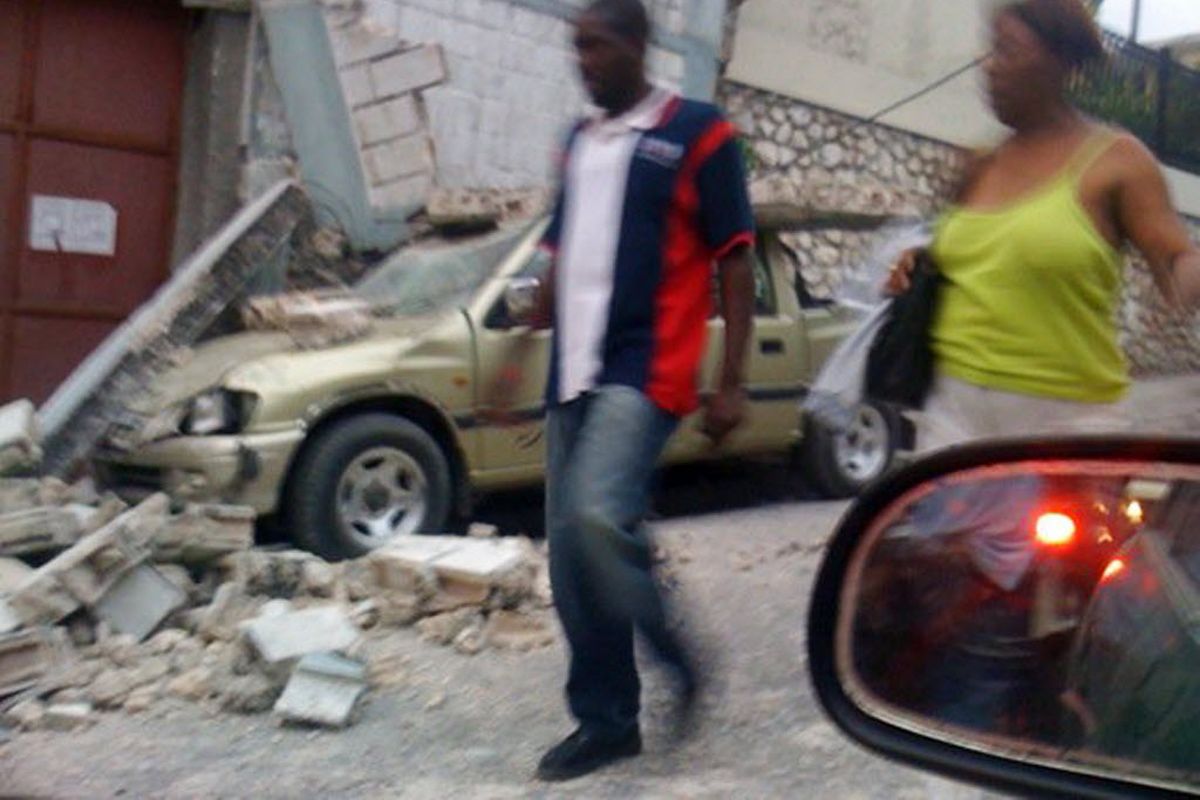World sends aid to Haiti
Rescue efforts impeded by devastated infrastructure

PORT-AU-PRINCE, Haiti – Emergency aid flowed from around the world toward Haiti on Thursday, only to confront a reality that grew more desperate by the hour: Crippled ports and communications left stunned earthquake survivors on their own to scavenge for food and water, carry away legions of dead and dig frantically for voices calling out from under the rubble.
President Obama promised $100 million and the full resources of the U.S. government for what he said would be one of the largest relief efforts in recent history. U.S. officials said 30 countries had either sent aid or promised to do so. Rescue teams from eight countries already were on the ground.
Two days after a magnitude 7.0 earthquake devastated Port-au-Prince, there was little evidence of the aid effort in the capital of the hemisphere’s poorest country.
“In Haiti, you’re lucky if they come with a screwdriver,” said Jean Marc Mercier, a Haitian American who spent the last two days hunting for survivors in the wreckage of the Hotel Montana, a longtime gathering spot for diplomats, journalists, humanitarian workers and businessmen.
The toppled six-story hotel was an exception to the scenes of abandonment elsewhere; a rescue team newly arrived from Virginia was combing the debris.
Mercier, who runs a computer business in Haiti, said he and others had been burrowing by hand with others toward voices calling out from deep inside the wreckage. They had managed to save one woman, an aid worker.
“Last night after I went to bed, all I heard were the voices in my head. One guy told me not to bother: ‘Go help people who are in better shape. There is no way you are getting to me,’ ” said Mercier, 44. “I wasn’t able to sleep all night.”
Aid officials said the risk of violence and looting would increase as scant food and water run out and frustrated families fail to find medical care for the injured.
Officials who were willing to estimate the number of dead acknowledged they were just guessing. Victor Jackson, an official with Haiti’s Red Cross, told Reuters news agency that his organization was estimating 45,000 to 50,000 had died.
All over Port-au-Prince, it seemed, the living bore the dead – in the beds of pickups, in wheelbarrows, on makeshift stretchers. At a hospital named Saint Marie, crowded a day earlier by dozens of people seeking help, the courtyard was empty except for two cleaners mopping bloody water into the street.
Both the air and seaports were proving to be bottlenecks.
Dr. Paul Farmer, a Harvard medical professor and U.N. deputy special envoy to Haiti, said supply lines are often fragile – even without a devastating natural disaster.
The quake-damaged seaport is “basically shut down,” said Farmer, who has 27 years experience working in Haiti. Air traffic was backed up, he said, with planes jockeying to land in a minimally functioning airport.
UNICEF, the U.N.’s children’s charity, was amassing supplies in Panama for an airlift. The agency sent one plane with medical kits, blankets and tents to Port-au-Prince on Thursday, but the plane could not land.
“It’s really a logistics nightmare,” Farmer said. “We need to fix the port and open up other land bridges and air spaces where planes and helicopters can land.”
The U.N. response has been further hampered by its own losses. Although there’s no official body count, U.N. officials said at least 30 of their colleagues in Haiti are known to be deceased and 100 to 150 remain missing.
In Washington, Obama enlisted both of his immediate predecessors, Presidents Bill Clinton and George W. Bush, to lead the initiative, following an example set by Bush after the 2004 Southeast Asian tsunami. It was his first presidential request of Bush, whom he criticized for his handling of the aftermath of Hurricane Katrina.
U.S. officials were able to evacuate between 300 and 400 U.S. citizens by air, most of them to the neighboring Dominican Republic, which shares the island of Hispaniola with Haiti.
One immediate focus of the U.S. effort was restoring communications, which were so bad that Obama was unable to reach Haitian President Rene Preval on Thursday afternoon.
A U.S. diplomat was among the dead. State Department spokesman P.J. Crowley said Victoria DeLong, 57, a cultural affairs officer, had been stationed in Haiti since last year.
The aircraft carrier Carl Vinson, equipped with three operating rooms, 19 helicopters and a water-purification system, was en route and was expected to arrive today with helicopters to help shuttle relief supplies and serve as a floating hospital.
The Navy also has dispatched an amphibious assault ship, the Bataan, with 2,000 members of a Marine expeditionary force aboard and its own medical facilities. Officials said they hoped the Marines would arrive today.
About 125 troops from the Army’s 82nd Airborne Division were also sent, the leading edge of a contingent of 3,000 soldiers, Defense officials said.
They will confront a patchwork of destruction. Downtown, many old French columns and porticos toppled into the wide and once-splendid Grand Rue. The middle section of the National Palace and all three domes fell, but the president’s apartment looked intact. The Casernes Dessalines, the infamous Army barracks where enemies of the Duvalier dictatorship were tortured and killed, still stood. But many government buildings were complete losses.